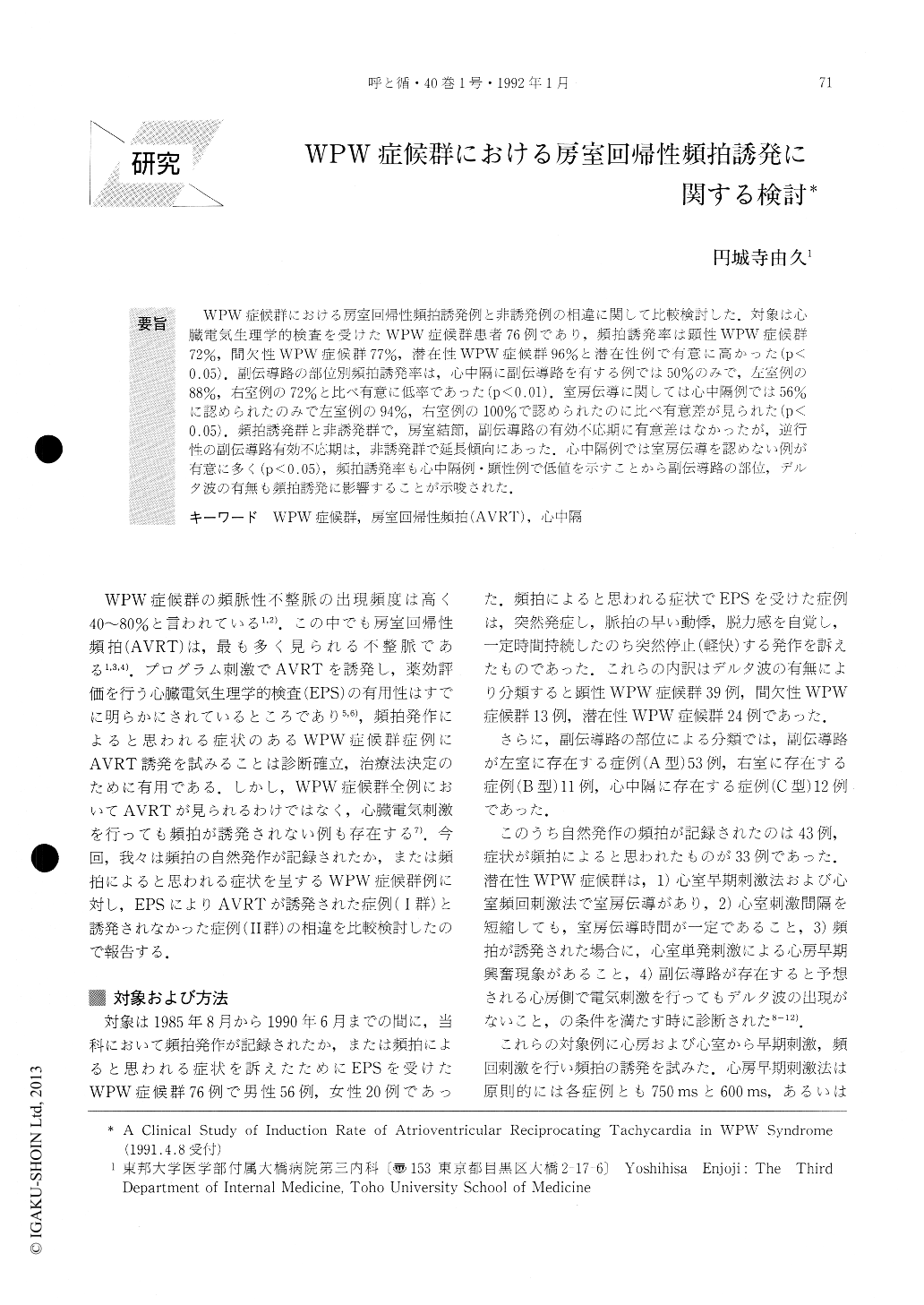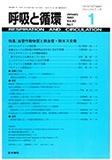Japanese
English
- 有料閲覧
- Abstract 文献概要
- 1ページ目 Look Inside
WPW症候群における房室回帰性頻拍誘発例と非誘発例の相違に関して比較検討した.対象は心臓電気生理学的検査を受けたWPW症候群患者76例であり,頻拍誘発率は顕性WPW症候群72%,間欠性WPW症候群77%,潜在性WPW症候群96%と潜在性例で有意に高かった(p<0.05).副伝導路の部位別頻拍誘発率は,心中隔に副伝導路を有する例では50%のみで,左室例の88%,右室例の72%と比べ有意に低率であった(p<0.01)。室房伝導に関しては心中隔例では56%に認められたのみで左室例の94%,右室例の100%で認められたのに比べ有意差が見られた(p<0.05).頻拍誘発群と非誘発群で,房室結節,副伝導路の有効不応期に有意差はなかったが,逆行性の副伝導路有効不応期は,非誘発群で延長傾向にあった.心中隔例では室房伝導を認めない例が有意に多く(p<0.05),頻拍誘発率も心中隔例・顕性例で低値を示すことから副伝導路の部位,デルタ波の有無も頻拍誘発に影響することが示唆された.
The differences in induction rate of atrioventricular reciprocating tachycardia (AVRT) were analyzed in 76 consecutive patients of WPW syndrome with tachycar-dia attack, confirmed by either ECG or history, and who underwent electrophysiological study. AVRT was in-duced by programed electrical stimulation in 72% of patients with manifest WPW syndrome, in 77% of patients with intermittent WPW syndrome, and in 96% of patients with concealed WPW syndrome, respective-ly. There was a significant difference in induction ratebetween manifest WPW syndrome and concealed WPW syndrome (p<0.05) .

Copyright © 1992, Igaku-Shoin Ltd. All rights reserved.


